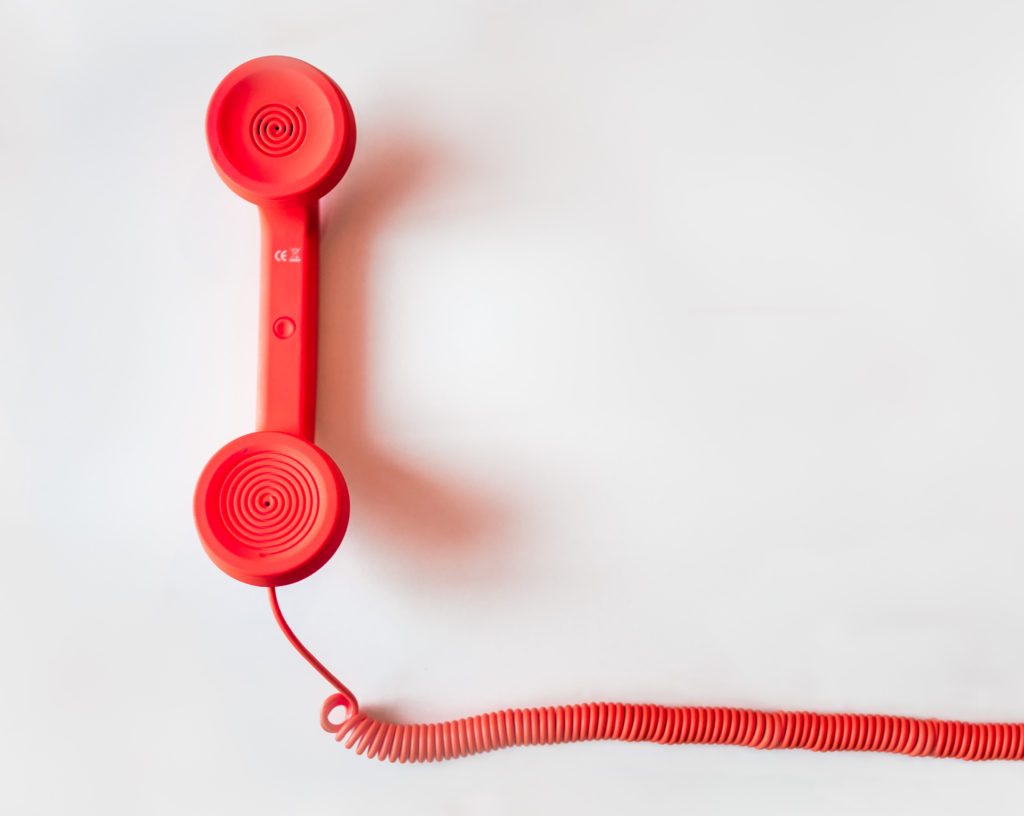Telephone-based interview is a known technique of administering questionnaires and obtaining data for research purposes. It has the advantages of being less expensive, less time-consuming and simpler than face-to-face interviews. This technique has been considered an equally reliable method and comparable to physical administration of questionnaires. Many published studies have used this method, so here are some basic steps and tips on how to conduct a successful phone interview:
- Establish a protocol
Prior to embarking on a phone interview session, it is best that you plan how to carry it out. Make sure you (and your assistants) have clear guidelines on when to call (timing), what questions to ask, how to ask them, and how to respond if the individual refuses to cooperate or gives an unexpected answer. Efforts need to be taken to ensure that every interviewer conducts their interview in a standard and consistent manner. If this is not the case, you may end up with data of poor quality.
- Calling potential respondents
Ideally, calls should be made when respondents are most likely to be free to talk. This often means weekends or weekdays in late afternoon or evening. However, it depends on the sampling frame you are targeting. For instance, if your potential respondents are older adults who are mostly retirees, they may have different schedules, and probably have ample time at noon. Therefore it is wise to do some mini-research or observation prior to calling, so that your time and effort are not wasted.
Here are some basic guidelines when making phone calls for data collection:
- Every conversation should begin with the caller introducing himself/ herself and stating clearly the purpose of the phone call.
- Confirm the respondent’s identity.
- Inform the respondent how long – on the average – the interview will take. Be mindful that long phone calls should be avoided as respondents will get bored. So try to keep it within a reasonable period (eg: 10-15 minutes).
- Make sure there is enough time to complete the interview, and do not proceed if the respondent is in a rush. Call him/her back at a convenient time.
- Obtain the respondent’s verbal consent before proceeding with questions.
- In case of refusal, do not insist that he/she should participate. Thank the respondent and end the call.
- To maximize response, participants who are not contactable (in the initial attempts) should be called up to 10 – 12 times (different timing), before being excluded.
- Before ending the call, make sure every item in the questionnaire is answered. If missing data is noticed while the calling period is still on-going, make a second phone call to the respondent to complete the questionnaire.
- Documenting non-response
Along the way, make a list of all non-responders. Among the possible reasons of non-response are issues related to connectivity (wrong number, number no longer in service, number used by someone else, number incomplete, etc), refusal to join the study, respondents unable to talk due to time constraint or distraction with another task, and many more. As much as possible, try to obtain basic demographic information of non-responders. This is to enable comparison of characteristics between those who respond and those who do not, at the analysis stage. By doing this, you can have an idea whether there could be potential bias in your results and how generalizable your findings are. For example, if those who do not respond have significantly lower economic and educational status than those who do, you might want to be more cautious while interpreting your data.

Telephone-based interviews have many advantages, especially when you want to reach a large number of people across different areas, in a short time. Nevertheless, researchers have also highlighted its potential drawbacks when compared to face-to-face interviews. Their arguments revolve around the following issues:
- face-to-face interviews are likely to contribute to better data quality because non-verbal engagement – which does not occur in telephone interviews – motivates the respondents to devote more effort in generating optimal answers;
- interviewers are able to observe nonverbal cues exhibited by respondents, and they can react to those cues in constructive ways;
- face-to-face methods enable the interviewers to observe events that might distract the respondent (e.g., the presence of another person) so they can respond accordingly;
- there is a tendency for phone interviewers to speak quickly due to the limited time allocated, thus prompting the respondents to do the same. In such circumstance, they have less time to carefully formulate answers, and have greater difficulty to understand the questions;
- respondents are likely to multi-task while speaking on the phone, which increases the likelihood of satisficing;
- call respondents are more likely to exhibit systematic response bias in the forms of acquiescence (tendency to agree), giving ‘no opinion response’, and greater social desirability (giving answers that make one looks more favourable).
In conclusion, telephone-based interview has its merits and limitations. It is up to the researcher to decide if this method is suitable, and to take necessary actions to ensure that phone calls are conducted using proper guidelines in order to maximize its effectiveness. As technology evolves and human migration is becoming a norm, telephone-based interview is likely to remain popular and highly relevant, while gradually supplemented (or even replaced) by newer means of data collection such as the social media and smart phone applications.
Sharing by
Research & Publications Unit
IKRAM Health

